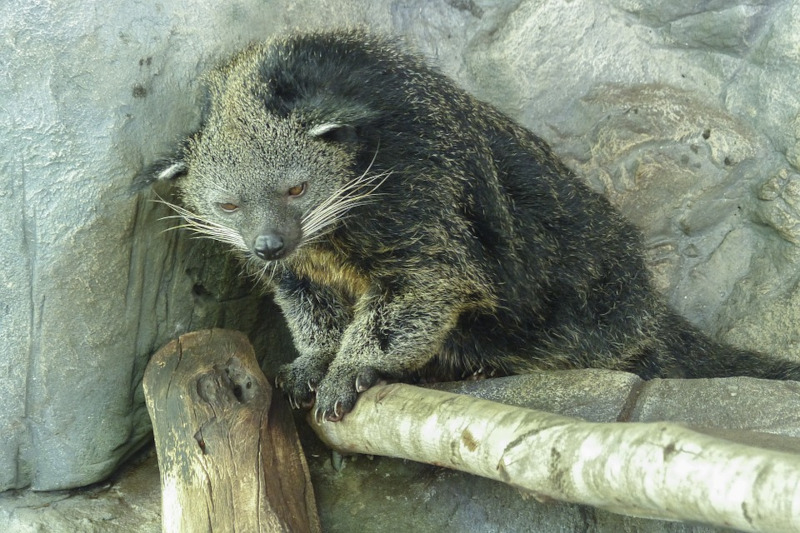Binturong Facts
- The Binturong represents a quite rare species of viverrid. In fact, this faascinating species currently lists as Vulnerable.
- The IUCN made this determination due to a rapidly declining population. In addition, researchers acknowledge a total of nine known subspecies of this creature.
- Although often called a bearcat, this impressive animal actually has no relation to either bears or cats. Such common names often lead to much confusion.
- Finally, the greatest threats to its existence that the species encounters include habitat loss and degradation of its primary habitat.
Related Articles
Binturong Physical Description
The Binturong only displays a rather moderate degree of sexual dimorphism. The females of this species average roughly 20% larger in size than the males.
The body of this animal typically grows heavy and long, and the legs stay comparatively short. The fur develops thick and consists of very strong hair, and predominantly appears black in color.
The thick, powerful tail also has a prehensile nature. The eyes of the Binturong are generally black, large, and quite prominent. The feet possess five toes, equipped with powerful claws.
The mature individual averages around 33 in (84 cm) in body length. The tail reaches around 27 in (69 cm) in length. An average weight is about 48 lb (22 kg), yet exceptional individuals sometimes reach 71 lb (32 kg).
- Kingdom: Animalia
- Phylum: Chordata
- Class: Mammalia
- Order: Carnivora
- Family: Viverridae
- Genus: Arctictis
- Species: A. binturong
Binturong Distribution, Habitat, and Ecology
The incredible Binturong evolved as endemic to specific areas of South and Southeastern Asia, but with a highly specific range.
The animal remains primarily restricted to areas of forest with tall trees. Individuals may also occasionally be found in forested plains. However, it is most commonly found in the hills and foothills.
There the tree cover is much more extensive. The thicker this remains, the greater the concentration of individuals. The trees provide the Binturong with both protection from predators, and shelter.
Individuals stay active during both day and night. The species also primarily lives an arboreal pattern, since it rarely descends from the trees.
The mammal typically remains shy in nature. Some can, however, be aggressive if threatened. Further, it has an omnivorous diet and principally feed on insects, fruit, earthworms, birds, fish, and small mammals.
Species Sharing Its Range
Check out our other articles on 6 Incredible Asian Islands, Great Hammerhead Shark, Spiny Bush Viper, Giants Causeway, Venus Flytrap, Orange-belted Bumblebee, Bornean Flat Headed Frog

